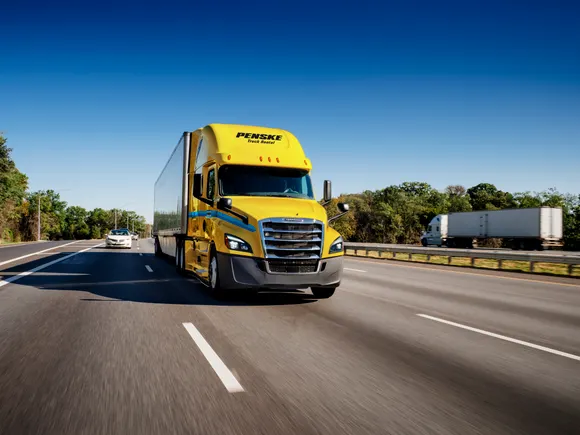The advent of artificial intelligence and automation platforms has transformed operational capabilities across various sectors, particularly in fleet management. Companies like Penske Truck Leasing have introduced innovative solutions, such as Catalyst AI, which allow businesses to gain actionable insights into their performance metrics, thus enabling optimization of operations. As SMB leaders and automation specialists navigate through numerous offerings, it is essential to analyze the strengths, weaknesses, potential return on investment (ROI), and scalability of these tools to identify which platform would yield the best outcome for their specific needs.
Catalyst AI exemplifies a robust AI-driven platform designed to enhance fleet performance through real-time data analytics and machine learning. Its ability to access and process metrics from hundreds of thousands of vehicles sets it apart from traditional tools. This capability allows businesses to benchmark against similar fleets with a level of accuracy and speed that human analysis cannot achieve, thereby facilitating immediate operational adjustments. The platform’s core strength lies in its real-time processing of vast datasets, which culminates in dynamically tailored insights encompassing fuel efficiency, idle times, and utilization rates.
However, Penske’s Catalyst AI is not without potential drawbacks. The implementation of such advanced solutions can often necessitate a significant upfront investment and ongoing operational costs. This financial commitment must be carefully weighed against projected savings from improved efficiencies and cost reductions. While the advanced nature of the platform offers considerable advantages, businesses must also consider their internal capabilities and resource allocation for optimizing the use of such tools.
In contrast, platforms like Zapier and Make offer varying degrees of automation capabilities that can seamlessly integrate multiple applications to streamline workflows. Zapier focuses on providing a no-code platform that enables users to connect applications without needing extensive technical knowledge. This accessibility makes it particularly appealing for SMBs looking to automate repetitive tasks without the burden of hiring technical staff. However, while Zapier excels in simplicity and user-friendliness, its limitations in customizing workflows can prove frustrating for businesses seeking advanced integrations.
Make, on the other hand, offers a more robust approach, with capabilities that appeal to technically proficient users. The visual programming interface allows for intricate customizations that can cater to more sophisticated operational needs. However, these advanced features come with a steeper learning curve, potentially limiting adoption in less tech-savvy teams. When evaluating these tools, businesses must critically assess the trade-offs between ease of use and advanced features, aligning their choice with their team’s competencies and specific use cases.
When comparing AI-driven analytics platforms with automation tools, it is crucial to consider scalability. A solution that accommodates growth is paramount, particularly for SMBs that anticipate larger operational scopes in the future. Both Catalyst AI and Make demonstrate significant scalability, enabling businesses to expand their use of the platforms without compromising performance. However, the adaptability of Zapier may face challenges due to the limits of its core architecture, especially as businesses grow and require increasingly complex integrations.
The ROI from such platforms can be substantial if leveraged correctly. For instance, insights gathered from a tool like Catalyst AI can facilitate informed decision-making that potentially reduces fuel costs, improves equipment utilization, and enhances overall fleet efficiency. As noted by Penske, customers utilizing the AI platform can make real-time decisions around idling policies and equipment usage that yield tangible operational benefits. In contrast, while automation platforms like Zapier and Make streamline processes, the financial benefits may be less direct, focusing more on time savings rather than hard cost reductions.
Ultimately, the choice between AI analytics platforms and automation tools hinges on specific organizational objectives, technological readiness, and resource availability. While consultations and trials of these platforms are advisable to ascertain their fit within a business’s ecosystem, leaders should focus on aligning their selected solutions with clearly defined metrics of success to justify the investment.
FlowMind AI Insight: In an era where data drives decision-making, leveraging advanced AI analytics can provide fleets with a strategic edge. However, businesses must balance the capabilities of such technologies with practical considerations of usability and costs to ensure sustainable growth and operational efficiency. As automation and analytics evolve, a careful assessment of these tools will be essential for maximizing ROI and fostering long-term success.
Original article: Read here
2024-04-26 07:00:00

